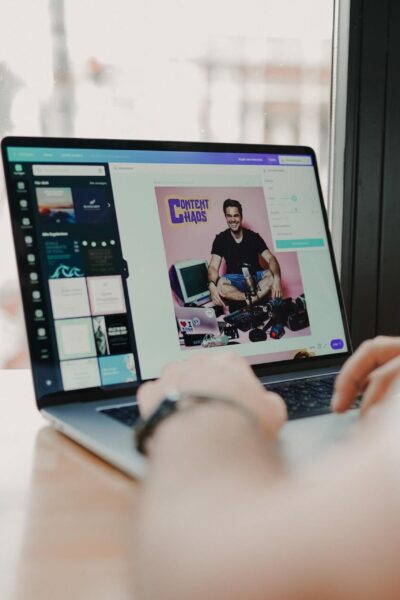Making money from and on the Internet is, when it comes down to it, pretty complicated at times. Digital life moves so fast that we, as digital marketers, are always playing this exhausting game of cat-and-mouse. Just when you think you can finally take a breather, consumers change their mind and now you’re back to square one – no passing go, and definitely no collecting $200. We’re constantly presented with all these ideas, pray that something sticks and won’t become obsolete in a month’s time.
Given this, once we find something that does work, we take that ball and run with it – and fast. However when we read conflicting reports, it becomes a struggle for us to figure out which route to take. This is definitely the case for the ongoing debate between Branded Content vs. Native Advertising. For example, content marketing costs 62% less than what traditional marketing does. But at the same time, the native ad market is projected to grow to $53 billion by 2020. What’s the deal here? Do we pick one over the other? Do we try for both? Should we simply ignore them completely? Are people robbing themselves of really fruitful and beneficial advertising opportunities because they believe that these two methods cannot exist harmoniously?
You’re damn right we are.
With over 200 million people now using ad-blocking software, we just can’t afford to be too selective. The complex relationship that branded content and native advertising share with one another is not black and white and cannot be treated as such. Like the rest of the Internet, it is an entire world of grey and you need to jump right into the fog to figure out what exactly is going to work for you.
In my relentless search to discover which of the two is going to be the next big thing, I spoke with Alice Almeida, Manager of Innovation and Insights at Hitwise APAC, who thinks we are missing the point entirely. “I don’t see there being a clear ‘winner’. Each (if done correctly) can be done extremely well – bringing in great results, but they can also work brilliantly together,” Almeida says in reference to the ongoing debate around Branded Content and Native Advertising.
Alice does note that a huge part of why no one can really reach a consensus on which method will be a more appropriate approach for their business, is because there’s a collective confusion as to what distinguishes the two. “Neither are going to become the next big thing,” Almeida says, “with so much confusion in the market as to what they both mean! I asked 10 people in the industry and they all came back with different answers before acknowledging that they don’t really know exactly. In true digital style, there are way too many terms for the same thing.”
In true digital style indeed – print may be dying but digital can be dumbfounding at times… So, to end our seemingly eternal struggle, what exactly is the difference between the two? They certainly seem to the same to some people. One caters to a publication’s audience and one caters to a brand’s audience, with potential crossover. It’s pretty straightforward, but the confusion Alice references is pretty understandable – the digital marketing landscape is full of buzzwords, the meaning can easily be lost. On top of that, traditional advertising is headed for the land of obsoletion as more and more consumers don’t want a bar of it.
But what isn’t as clear-cut as the difference between these terms is the understanding of how they can work simultaneously and harmoniously with another in their application. Of course, a publication is going to gravitate to what they think their audience is going to welcome with open arms and for that to happen the publication and the brand must collaborate effectively. 70% of internet users would prefer to learn about products via content as opposed to traditional advertising. Alice is inclined to agree with these statistics.
“(It) all comes down to how you’re pushing your content to the consumer,” she says. “Social, newsletters, or within a publisher – all will be received very differently, and hence the performance results will change. Brands hoping to interact with consumers need to step back from the “one message, mass audience” approach and implement the ‘hot word’ of 2016 – segmentation.”
And isn’t that the point? Refining the process? We know this – audiences cannot be understood as this one homogenous entity. Besides acknowledging that every individual member of your demographic is exactly that – individual – it’s also wise to know that these members are going to interact with your publication differently. Alice referenced this when speaking about her own experience in this area.
“In order to deliver exactly what your consumer wants, you need to first understand IF they are actually in the purchase cycle – very important – and where they are,” she says. “This can easily be done with online behavioural and search data. Many years ago, I ran a brand effectiveness study on a financial institution who sponsored an in-depth search tool for a property website. The results were huge. Why? Because the brand was seen to be assisting people on their purchase journey and not just throwing a message in their face. The same applies for content. Whether it is native advertising or branded content, make it useful. Consumers will click if it is relevant and interesting.” So, a large factor in how well your audience is going to receive your chosen method of advertising eventually will rest on the understanding and acceptance that you’re going to have integrate, perhaps in a complex way, these ads in a way that is:
- a) Going to make sense to your target consumer
- b) Preferably not going to make the consumer feel like they’re copping a colossal slap to the face with ads. No one likes that!
Extending on this, some concerns exist about the way the ads themselves might affect the sanctity and ethos of the publication itself, with particular attention paid towards native advertising. It is an understandable belief that writing an article with the knowledge that you somehow have to incorporate the sponsoring brand, could conflict with the editorial integrity of the article and site. With this perception present, it’s definitely conceivable that some might believe it compromises the quality of the journalism itself, from both the reader and writer’s perspective. Speaking from previous journalistic experience, there is a certain awkwardness and restriction, albeit likely self-imposed, when writing with the constant knowledge that you also have to cater, and in a way showcase, a particular advertisement or brand.
Alice, however, thinks this is folly. She argues that if you’re going into writing this article, or even entering these advertising deals, with that mindset, you’re doomed from the start.
“Just because the piece is written by or for a brand, doesn’t mean the level of journalism drops,” she says. “Just because it’s an ad, doesn’t mean it needs to be cheap, brazen or a sales pitch. In fact, some of the best Native Advertising I have seen has left me shocked when I see it’s sponsored or written by a brand. Keep it topical and less sales-y.” You got that? The best way to sell is to act like you’re not selling at all. Genius.
She also makes note that she has witnessed the return of the “Spray and Pray” approach to advertising, especially in the realm of Branded Content, and believes it is stalling both methods. Chucking ads out there in abundance and hoping the consumer engages is a risky method, and, as recent studies have shown, is more likely to have the consumer immediately disengage. Alice adds, “Brands can really kick-arse in this area if they first do a bit of homework. Being armed with consumer insights before implementing any new marketing initiative is key for success. Consumers are becoming more and more demanding of brands. Consumers give up a lot of data when signing up for memberships. Use it. Make our conversation relevant and interesting. If all of this is done, then the future of Branded Content and Native Advertising is incredibly positive.”
Content from our partners
But if you really want to get the most you can out of advertising, then it seems almost self-destructive to just limit oneself to a singular method. Both can exist harmoniously despite their fundamental differences – it’s all about the execution and content is most certainly king in this instance as consumers are willing to ‘hear a brand out’ if the facade is engaging enough. In saying that, you are still going to need the kind of relationship between brand and publication’s that is willing to compromise, coupled with a mutual understanding that you have to want to put in the hard yards and do it right. This is a two-way street after all. As Alice puts it, “Writing and publishing an article just because you can, and not making it impactful or relevant can be very costly and damaging for a brand.”
When it comes down to it, the supposed debate between Native Advertising and Branded Content is futile because there will never be a clear, objective winner. Both methods will garner results when executed correctly and creatively, and for that to work, communication must be open between publisher and brand.
There is almost an overwhelming abundance of data that is obtainable for both brands and publications that both can wield effectively – creating appealing and most importantly, targeted, content has honestly, never been easier. Alice offers some simple yet poignant advice when it comes to dealing with growth: “Tailor it, target it, watch the impact. Not implementing this will see the growth of Native Advertising and Branded Content stall.”
Two is better than one – case closed, guys.












